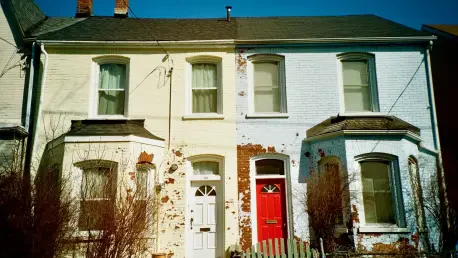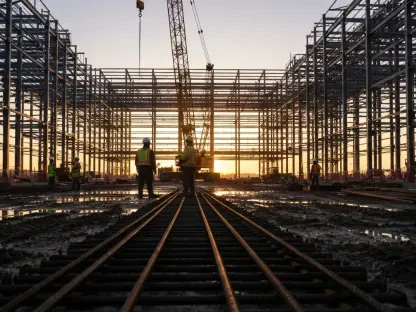The housing sector in Canada is a cornerstone of the country’s economy, contributing a staggering $143.4 billion to the Gross Domestic Product last year and offering employment to over 1.2 million people. Despite the sector’s significant economic impact, it is grappling with challenges that threaten to alter its trajectory. As Canada’s residential infrastructure continues to age, its “remaining useful life” declines, posing potential risks to the housing market’s stability and growth. With homes valued at $4.2 trillion, accounting for 25% of national wealth, understanding the dynamics of aging homes becomes critical. Urban areas are experiencing a notable shift, with apartment construction witnessing a 6.9% upswing, compensating for diminished investments in single-detached homes. This trend is essential as it reflects the shifting preferences and urbanization effects in provinces like Ontario, Alberta, and Quebec. However, as construction thrives, the concerns regarding aging homes persist, influencing both economic and social landscapes across Canada.
Shifting Investment Patterns
Canada’s residential investment scene demonstrates a fascinating contrast between nominal growth and inflation-adjusted decline. In the past year, while inflation-adjusted residential investment dropped by a modest 0.4%, nominal investment saw a rise of 2.5%, reaching $237.7 billion. This growth, however, is not uniformly distributed across housing types or regions, illuminating underlying economic shifts. Investment in apartment construction surged, illustrating a societal trend toward urban living and smaller, communal housing units. This increase in apartment availability managed to balance out reduced spending on single-detached homes, which have steadily seen a decline in interest among buyers and investors alike. Meanwhile, renovation activities have decelerated, possibly indicating an increasing focus on new constructions rather than refurbishing older existing homes. Regional disparities were pronounced; while Ontario and British Columbia experienced a minor dip in housing investments, Alberta and Quebec benefitted from urban apartment construction booms, showcasing diverse regional growth trajectories within the national housing economy.
The Aging Infrastructure Challenge
A notable aspect influencing Canada’s housing economy is the aging residential infrastructure. The average “remaining useful life” of homes has reduced to 58.9%, indicating that many residences are exceeding their midway point of usability. This decline in housing lifespan is caused by older homes being unable to compete with newer builds in longevity and maintenance efficiency. A factor often overlooked is single-detached homes, which saw a significant decrease in usable life, highlighting a broader trend toward more sustainable building practices evident in apartments, rows, and semi-detached homes. Additionally, as apartment additions become prevalent, provinces such as Ontario, Alberta, and Quebec contribute thousands of new housing units into the mix, counterbalancing the aging stock concerns. However, this influx necessitates nuanced approaches to housing policies, ensuring a balance between preserving existing structures and fostering new development. The continuous trend of urbanization and shifts in housing preferences further complicates this scenario, prompting consideration of responsive infrastructure development strategies.
Economic Implications and Future Directions
The Canadian housing sector is a pivotal pillar of the nation’s economy, contributing an impressive $143.4 billion to the nation’s GDP last year and providing jobs for more than 1.2 million individuals. Despite its critical economic role, the sector faces challenges that could reshape its future. As Canada’s residential infrastructure ages, its “remaining useful life” diminishes, potentially impacting market stability and growth prospects. Homes are valued at around $4.2 trillion, making up 25% of Canada’s national wealth, so understanding aging home dynamics is essential. In urban settings, there’s been a significant shift with apartment construction rising by 6.9%, offsetting the decline in single-detached home investments. This trend reflects changing preferences and urban growth in provinces like Ontario, Alberta, and Quebec. Even as construction booms, concerns about aging homes continue to shape both economic and social landscapes throughout Canada, highlighting the sector’s complex future trajectory.









